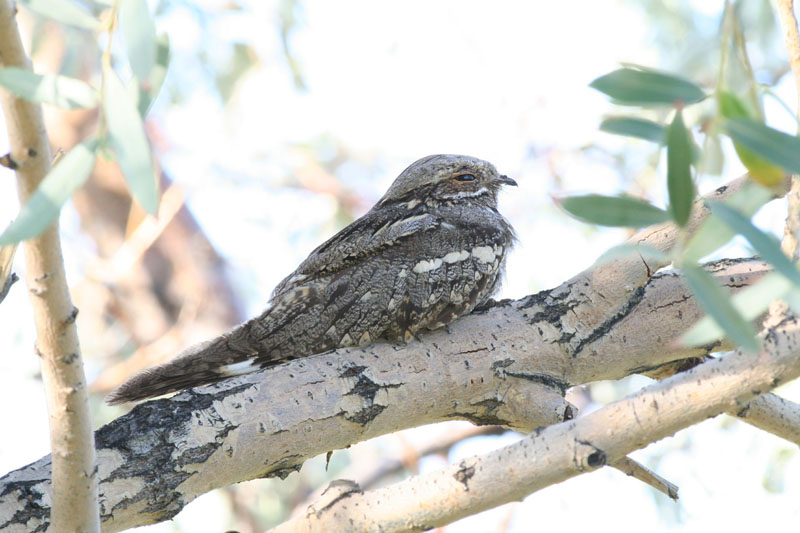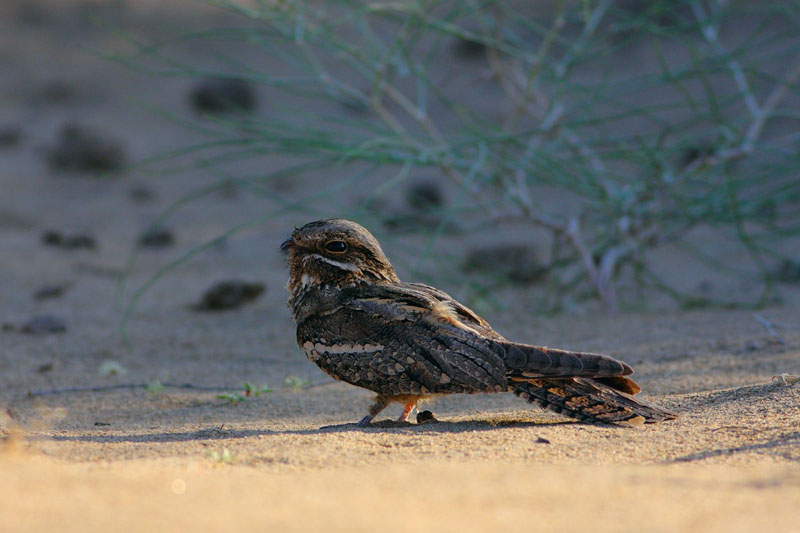Caprimulgus europaeus
IUCN
LCBasic Information
Scientific classification
- name:Caprimulgus europaeus
- Scientific Name:European Nightjar, Eurasian Nightjar,Caprimulgus europaeus,Eurasian Nightjar
- Outline:Climbing birds
- Family:nighthawks hawks nighthawks
Vital signs
- length:26-28cm
- Weight:75-100g
- lifetime:8years
Feature
The beak is short, the mouth is very large, and the tips of the wings are rounded.
Distribution and Habitat
In China, there are breeding records in the Altai Mountains, Kashgar in western Xinjiang, Tianshan Mountains to northwest Gansu and Inner Mongolia. Abroad, it breeds in Europe, northern Asia, Mongolia and northwest Africa, and migrates to northwest Africa and India.
It lives in mountain and plain forests, especially in mountain mixed forests and broad-leaved forests below 2,000 meters above sea level. It likes forest clearings, forest edge shrubs and sparse forests in valleys, and sometimes appears in semi-deserts and exposed rocky wilderness and shrub grass slopes.
Appearance
Mainly brownish grey, covered with spots and vertical stripes, no ear feathers. Male birds have small white spots near the wing tips, and the outer tail feathers are white when flying; female birds have no white. Iris is dark brown, beak is dark horny, and feet are gray.
Details
The European Nightjar was formerly known as the goatsucker because farmers believed that the bird sucked goat's milk at night. Its broad beak is a reflection of this legend. In reality, the short, broad beak is used to catch prey such as moths at night.

The plumage of an adult European Nightjar is gray-brown. Males have white markings on their wings and tail.
The European Nightjar becomes active after dusk. Their distinctive warbling call can be heard in the trees after sunset. During the day, the European Nightjar can move on the ground, relying entirely on the camouflage pattern of its feathers to avoid being discovered by its predators.
In winter, the European Nightjar breeds in heathland and semi-forested areas in Africa or South Africa. In the park, the European Nightjar lives in semi-open pine forests and heathland.
The European Nightjar often moves alone or in pairs, and also in small groups during migration. It is nocturnal, mainly active at dusk and night. During the day, it often lives on branches in the forest or in dark places on the ground, and only flies to open areas at dusk and night to move and hunt. And often chirps at night. It flies fast and agilely, and is silent when flying. It mainly feeds on insects such as mosquitoes, gnats, beetles, and moths. It uses its large mouth to hunt while flying.

The breeding season of the European Nightjar is generally from May to July, and it usually nests on the ground in the forest. The nests are mostly placed under shrubs, between the roots of large trees, or in depressions on the ground covered by young trees and pine branches. Sometimes eggs are laid directly on the bare ground without any inner cushion, or only occasionally with pine needles and leaves. Each nest lays 2 eggs, which are oval, gray, and have fuzzy dark spots. The size of the eggs is 28-36×21-24 mm. The male and female parents take turns to incubate the eggs. The incubation period is 17-18 days. The chicks mature late and can only fly after being fed by their parents for about 16-18 days.








